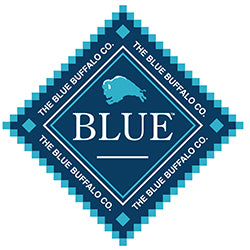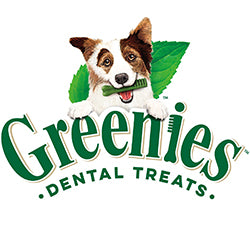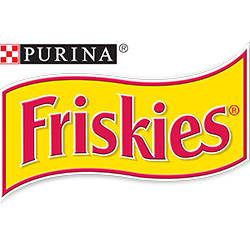
Discovering Dog Breeds: A Guide to Finding Your Perfect Canine Companion
Discovering Dog Breeds: A Guide to Finding Your Perfect Canine Companion
With over 340 recognized dog breeds worldwide, choosing the perfect canine companion can be exciting yet challenging. Each breed has unique characteristics, including size, temperament, energy level, and grooming needs. This comprehensive breed guide will explore dog breeds, discuss their unique traits, and provide insight into which breeds might best fit different lifestyles and households.
Part 1: Popular Dog Breeds and Their Characteristics
1.1 Labrador Retriever
Labrador Retrievers are consistently ranked as one of America's most popular dog breeds. These friendly, outgoing dogs are known for their intelligence, adaptability, and loyalty. Labs make great family pets due to their gentle nature and love for children. Other examples that Labs are good for are service dogs, therapy dogs, and rescue dogs.
1.2 German Shepherd
German Shepherds are highly intelligent, confident, and protective dogs, making them excellent working dogs and loyal family pets. They have a variety of roles, including official police work and search and rescue for the visually impaired used as guide dogs. German Shepherds require regular mental and physical stimulation to stay happy and healthy.
1.3 Golden Retriever
Golden Retrievers are friendly, intelligent, and devoted dogs, making them great friends for families, singles, and seniors. They are trainable and excel in obedience, agility, and other dog sports. Goldens have a strong instinct to retrieve, which can be channeled into activities like fetch or even dock diving.
1.4 Bulldog
Bulldogs are known for their muscular build, loose skin, and distinctive pushed-in nose. These gentle, friendly, and patient dogs make them excellent family pets. Bulldogs have a low energy level and are well-suited for apartment living. However, they are prone to specific health issues and may require special care to maintain their well-being.
1.5 Beagle
Beagles are small to medium-sized dogs with a keen sense of smell and a friendly, curious temperament. Originally bred as scent hounds for hunting, Beagles have a solid sense to follow their noses. They make great family pets but require regular exercise to prevent destructive behavior.
Part 2: Choosing the Right Dog Breed for Your Lifestyle
2.1 Assessing Your Living Situation
Consider your living situation when selecting a dog breed. One example is if you live in an apartment or have limited outdoor space, a smaller or low-energy breed may be more suitable. Another factor is if you have a large yard and ample space, a more active or larger breed may be a better fit.
2.2 Activity Level and Exercise Requirements
Determine the activity level that best matches your lifestyle. There are Some breeds require more exercise and mental stimulation than others. High-energy breeds like Border Collies, Australian Shepherds, or Siberian Huskies may become destructive without enough physical activity and mental challenges. On the other hand, low-energy breeds like French Bulldogs or Pugs may be more content with leisurely walks and indoor playtime.
2.3 Grooming Needs
Consider the grooming requirements of each breed when making your decision. Some breeds, like Poodles or Shih Tzus, require regular professional grooming, while others, like Beagles or Boxers, have minimal grooming needs. Remember that some breeds may also be more prone to shedding, which could be a concern for individuals with allergies or a preference for a clean home.
2.4 Temperament and Compatibility
Evaluate each breed's temperament and how it aligns with your household and lifestyle. Some breeds, like Labrador Retrievers or Cavalier King Charles Spaniels, are also known for their friendly and adaptable nature, making them great companions for families with children or other pets. Other breeds, like the protective Akita or the independent Chow Chow, may require experienced handlers or more specific living situations.
2.5 Size and Space Requirements
The size is another critical factor to consider when choosing a dog breed. Larger breeds like Great Danes or Mastiffs may need to be better suited for apartment living due to their size and space requirements. Conversely, smaller breeds like Chihuahuas or Dachshunds can quickly adapt to smaller living spaces. Remember that larger dogs may also require more food and incur higher veterinary costs due to their size.
Part 3: Rare and Unique Dog Breeds
3.1 Xoloitzcuintli
The Xoloitzcuintli, the Mexican Hairless Dog, is a rare and ancient breed from Mexico. These dogs are known for their hairlessness, which can be a plus for allergy sufferers. Xolos are intelligent and loyal and make excellent watchdogs.
3.2 Bedlington Terrier
The Bedlington Terrier is an energetic and affectionate breed known for its unique, lamb-like appearance. These dogs are intelligent, agile, and love to play. Their non-shedding coat is ideal for people with allergies but requires regular grooming to maintain its shape.
3.3 Norwegian Lundehund
The Norwegian Lundehund is a unique breed with distinctive features, including six toes on each foot and extraordinary flexibility. These agile dogs were initially bred for puffin hunting in Norway but now make curious and loving companions.
3.4 Azawakh
The Azawakh is a tall, slender sighthound originating from West Africa. These dogs are known for their speed, endurance, and grace. Azawakhs are loyal and affectionate with their families but may be reserved with strangers. They need regular exercise to thrive.
Part 4: Mixed Breeds and Rescue Dogs
4.1 Benefits of Mixed Breeds
Mixed breeds, also known as "mutts," can be wonderful companions with the potential for unique traits and characteristics. They often have fewer health issues due to their diverse genetic backgrounds, and adopting a mixed-breed dog can provide a loving home for an animal in need.
4.2 Adopting a Shelter or Rescue Organization
Consider adopting a dog from a shelter organization, where you can find dogs of all breeds, ages, and sizes needing a forever home. These organizations often have resources to help you find and match you with a dog that suits your lifestyle. Adopting a rescue dog can provide a loving home for a dog in need and potentially save a life.
Choosing the right dog breed is a critical decision that makes you carefully consider various factors, including size, temperament, activity level, and grooming needs. You can find the perfect canine companion to share your life with by researching different breeds and assessing your lifestyle and preferences. Whether you choose a purebred dog, a mixed breed, or a rescue dog, the joy and companionship of a loving canine friend are truly unmatched.
With over 340 recognized dog breeds worldwide, choosing the perfect canine companion can be exciting yet challenging. Each breed has unique characteristics, including size, temperament, energy level, and grooming needs. This comprehensive breed guide will explore dog breeds, discuss their unique traits, and provide insight into which breeds might best fit different lifestyles and households.
Part 1: Popular Dog Breeds and Their Characteristics
1.1 Labrador Retriever
Labrador Retrievers are consistently ranked as one of America's most popular dog breeds. These friendly, outgoing dogs are known for their intelligence, adaptability, and loyalty. Labs make great family pets due to their gentle nature and love for children. Other examples that Labs are good for are service dogs, therapy dogs, and rescue dogs.
1.2 German Shepherd
German Shepherds are highly intelligent, confident, and protective dogs, making them excellent working dogs and loyal family pets. They have a variety of roles, including official police work and search and rescue for the visually impaired used as guide dogs. German Shepherds require regular mental and physical stimulation to stay happy and healthy.
1.3 Golden Retriever
Golden Retrievers are friendly, intelligent, and devoted dogs, making them great friends for families, singles, and seniors. They are trainable and excel in obedience, agility, and other dog sports. Goldens have a strong instinct to retrieve, which can be channeled into activities like fetch or even dock diving.
1.4 Bulldog
Bulldogs are known for their muscular build, loose skin, and distinctive pushed-in nose. These gentle, friendly, and patient dogs make them excellent family pets. Bulldogs have a low energy level and are well-suited for apartment living. However, they are prone to specific health issues and may require special care to maintain their well-being.
1.5 Beagle
Beagles are small to medium-sized dogs with a keen sense of smell and a friendly, curious temperament. Originally bred as scent hounds for hunting, Beagles have a solid sense to follow their noses. They make great family pets but require regular exercise to prevent destructive behavior.
Part 2: Choosing the Right Dog Breed for Your Lifestyle
2.1 Assessing Your Living Situation
Consider your living situation when selecting a dog breed. One example is if you live in an apartment or have limited outdoor space, a smaller or low-energy breed may be more suitable. Another factor is if you have a large yard and ample space, a more active or larger breed may be a better fit.
2.2 Activity Level and Exercise Requirements
Determine the activity level that best matches your lifestyle. There are Some breeds require more exercise and mental stimulation than others. High-energy breeds like Border Collies, Australian Shepherds, or Siberian Huskies may become destructive without enough physical activity and mental challenges. On the other hand, low-energy breeds like French Bulldogs or Pugs may be more content with leisurely walks and indoor playtime.
2.3 Grooming Needs
Consider the grooming requirements of each breed when making your decision. Some breeds, like Poodles or Shih Tzus, require regular professional grooming, while others, like Beagles or Boxers, have minimal grooming needs. Remember that some breeds may also be more prone to shedding, which could be a concern for individuals with allergies or a preference for a clean home.
2.4 Temperament and Compatibility
Evaluate each breed's temperament and how it aligns with your household and lifestyle. Some breeds, like Labrador Retrievers or Cavalier King Charles Spaniels, are also known for their friendly and adaptable nature, making them great companions for families with children or other pets. Other breeds, like the protective Akita or the independent Chow Chow, may require experienced handlers or more specific living situations.
2.5 Size and Space Requirements
The size is another critical factor to consider when choosing a dog breed. Larger breeds like Great Danes or Mastiffs may need to be better suited for apartment living due to their size and space requirements. Conversely, smaller breeds like Chihuahuas or Dachshunds can quickly adapt to smaller living spaces. Remember that larger dogs may also require more food and incur higher veterinary costs due to their size.
Part 3: Rare and Unique Dog Breeds
3.1 Xoloitzcuintli
The Xoloitzcuintli, the Mexican Hairless Dog, is a rare and ancient breed from Mexico. These dogs are known for their hairlessness, which can be a plus for allergy sufferers. Xolos are intelligent and loyal and make excellent watchdogs.
3.2 Bedlington Terrier
The Bedlington Terrier is an energetic and affectionate breed known for its unique, lamb-like appearance. These dogs are intelligent, agile, and love to play. Their non-shedding coat is ideal for people with allergies but requires regular grooming to maintain its shape.
3.3 Norwegian Lundehund
The Norwegian Lundehund is a unique breed with distinctive features, including six toes on each foot and extraordinary flexibility. These agile dogs were initially bred for puffin hunting in Norway but now make curious and loving companions.
3.4 Azawakh
The Azawakh is a tall, slender sighthound originating from West Africa. These dogs are known for their speed, endurance, and grace. Azawakhs are loyal and affectionate with their families but may be reserved with strangers. They need regular exercise to thrive.
Part 4: Mixed Breeds and Rescue Dogs
4.1 Benefits of Mixed Breeds
Mixed breeds, also known as "mutts," can be wonderful companions with the potential for unique traits and characteristics. They often have fewer health issues due to their diverse genetic backgrounds, and adopting a mixed-breed dog can provide a loving home for an animal in need.
4.2 Adopting a Shelter or Rescue Organization
Consider adopting a dog from a shelter organization, where you can find dogs of all breeds, ages, and sizes needing a forever home. These organizations often have resources to help you find and match you with a dog that suits your lifestyle. Adopting a rescue dog can provide a loving home for a dog in need and potentially save a life.
Choosing the right dog breed is a critical decision that makes you carefully consider various factors, including size, temperament, activity level, and grooming needs. You can find the perfect canine companion to share your life with by researching different breeds and assessing your lifestyle and preferences. Whether you choose a purebred dog, a mixed breed, or a rescue dog, the joy and companionship of a loving canine friend are truly unmatched.
- Choosing a selection results in a full page refresh.












